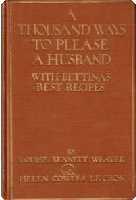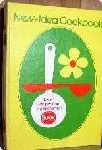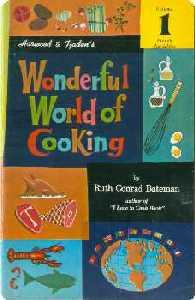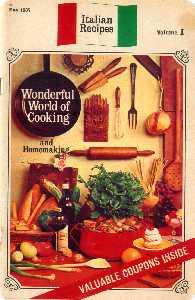Bettina's Cookbooks
A little note about some vintage cookbooks tonight, even though they aren't food company cookbooks. I was answering an inquiry by a reader of my website, so I thought I'd go ahead and post the information here in the event it might be useful to someone else.
A beginning cookbook collector, she was inquiring about a title she had recently acquired -- A Thousand Ways to Please a Husband. I'm not sure which edition she had, but compiled a list of the Bettina cookbooks for her.

The first book starts at the beginning of Bettina and Bob's marriage, and there are several others in the Bettina series.
A Thousand Ways to Please a Husband was first published in 1917, with a new, revised edition being published in 1932, and at least one other edition in 1941. A facsimile edition was also printed in 1970. Different covers on all.
A Thousand Ways to Please a Husband with Bettina's Best Recipes by Louise Bennett Weaver and Helen Cowles Le Cron. Decorations by Elizabeth Colbourne. 479 pages. Hardcover. (1917, 1932, 1941, 1970)
A Thousand Ways to Please a Family with Bettina's Best Recipes by Louise Bennett Weaver and Helen Cowles Le Cron. Decorations by Elizabeth Colborne. 397 pages. Hardcover. (1922)
Bettina's Best Salads and What to Serve With Them by Louise Bennett Weaver and Helen Cowles LeCron. Illustrations by Elizabeth Colborne.
215 pages. Hardcover. (1923)
Bettina's Best Desserts by Louise Bennett Weaver and Helen Cowles Le Cron. Illustrated by Elizabeth Colborne. 194 pages. Hardcover. (1923)
When Sue Began to Cook with Bettina's Best Recipes: A Beginning Cook Book for Girls from Eight to Fifteen by Louise B. Weaver. Illustrated. 189 pages
Hardcover. (1924)
Bettina's Cakes and Cookies by Louise Bennett Weaver and Helen Cowles Le Cron. Illustrated by Elizabeth Colborne. 224 pages. Hardcover. (1924)








